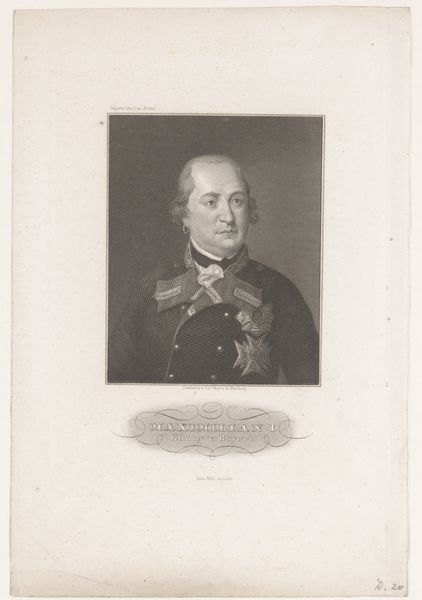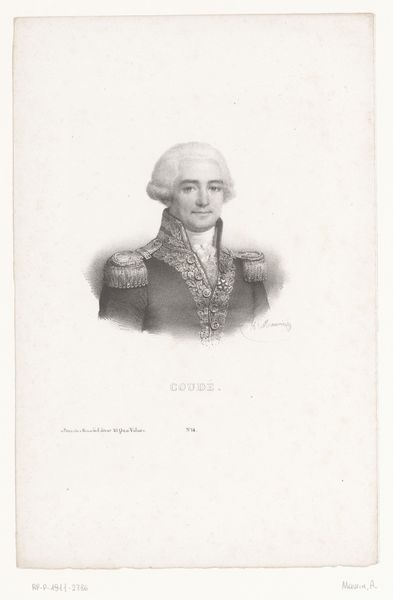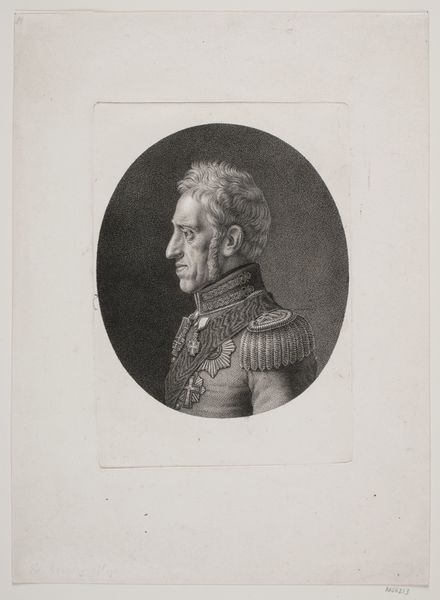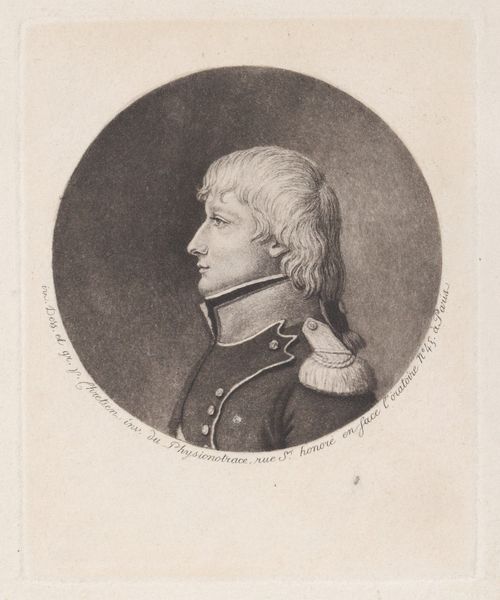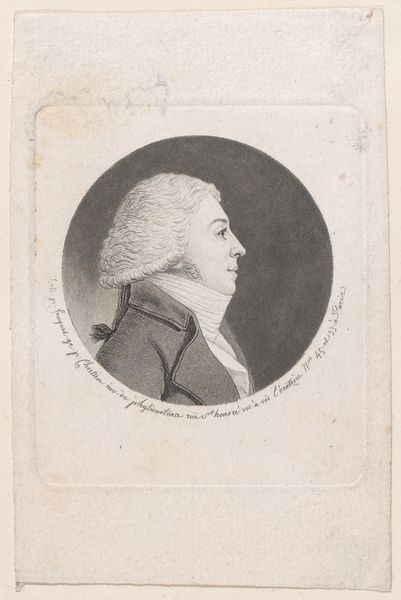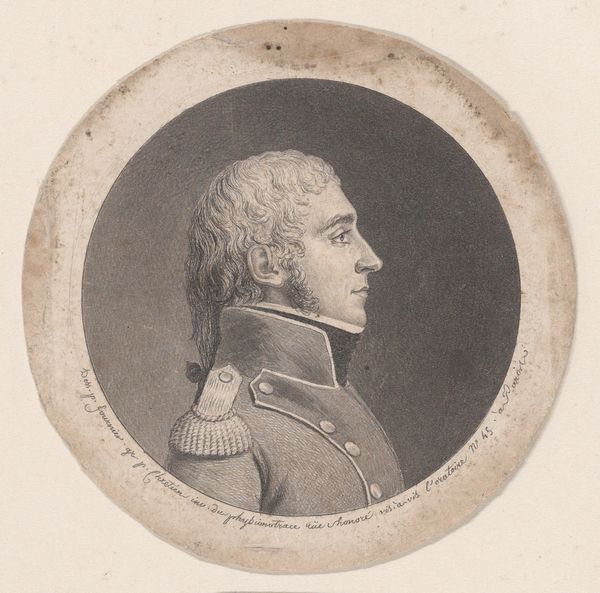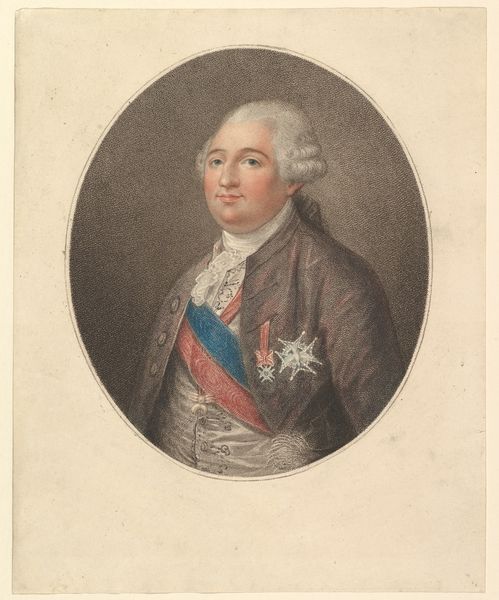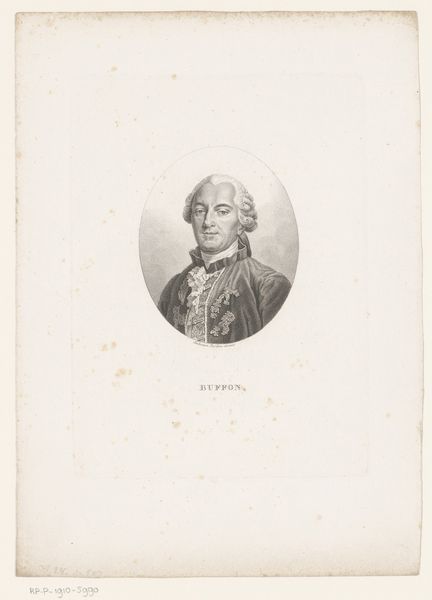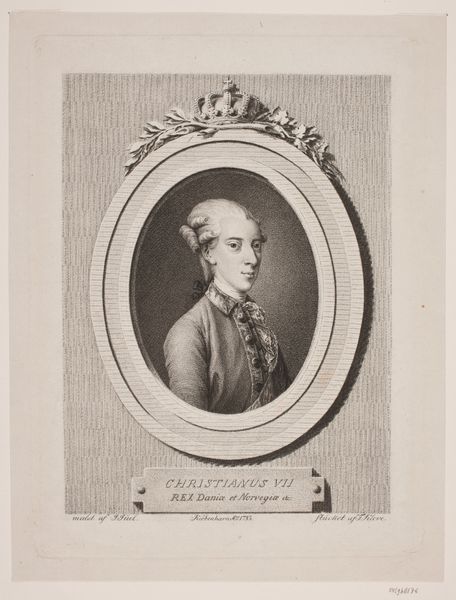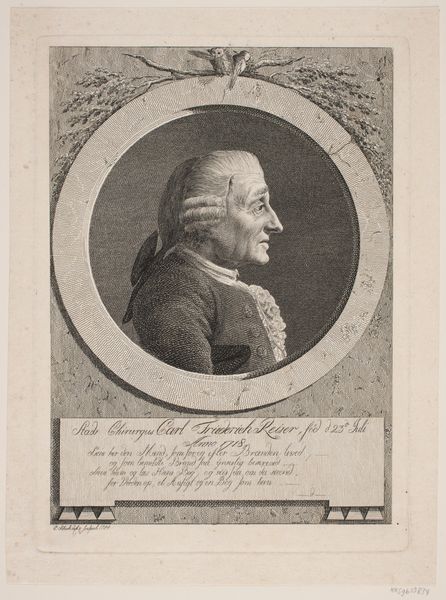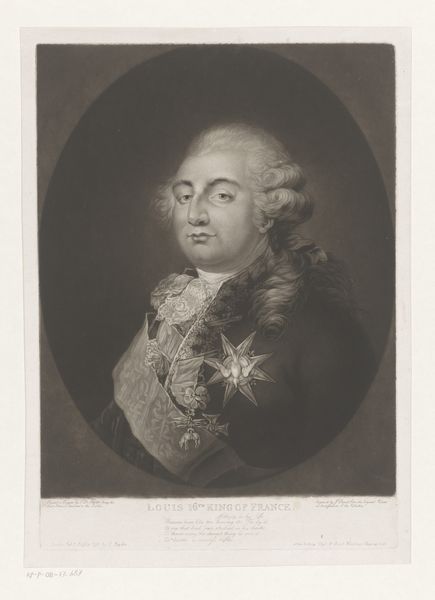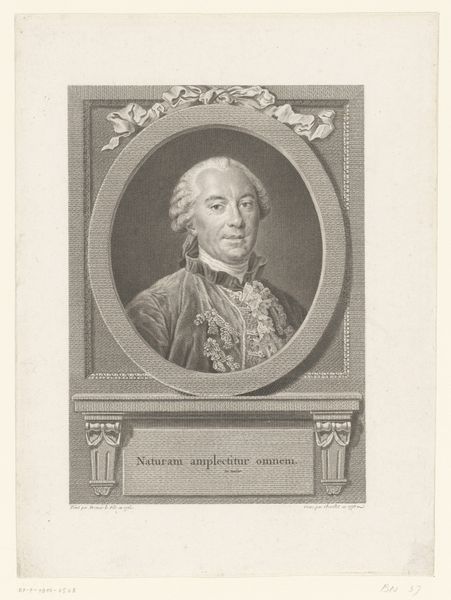
drawing, print, graphite, engraving
#
portrait
#
drawing
#
neoclacissism
# print
#
graphite
#
graphite
#
engraving
#
profile
Dimensions: Plate: 2 13/16 × 2 1/2 in. (7.1 × 6.3 cm) Sheet: 4 1/2 × 3 9/16 in. (11.5 × 9.1 cm)
Copyright: Public Domain
Curator: Gilles Louis Chrétien created this profile portrait of E.C. Genet in 1793, using graphite and engraving. It is currently held in the collection of the Metropolitan Museum of Art. Editor: It strikes me as rather stern. The stark profile view, enclosed within that rigid circle, projects an air of unyielding formality. Curator: That formality is deliberate, and indicative of its time. Neoclassicism in art was frequently employed to convey ideals of civic virtue and rational order during periods of political upheaval, which Genet's life certainly encompassed. Editor: Ah yes, Citizen Genet! He's notorious, really. French Minister stirring up trouble during Washington's presidency. How does this portrait function as an element in that larger political theater? Curator: His commission involved mobilizing American support for revolutionary France. This image, I argue, served a crucial propaganda role, visualizing Genet's authority, connecting him to larger discourses surrounding diplomatic recognition and republican identity. Editor: It's quite an elegant image to accompany a controversial figure. The circular text framing his face, though lovely, is almost suffocating. One almost sees it as representing the pressure he was under, perhaps a reminder of the diplomatic tightrope he was walking. Curator: The precision and controlled line work characteristic of the engraving would appeal to a sense of rational authority and officialdom, perhaps countering anxieties about the more radical implications of the French Revolution. Even the detail in his uniform, the precise rendering of the embroidery, underscores this. Editor: It feels almost contradictory, doesn't it? This exquisite artistic restraint employed in service of, shall we say, a rather less restrained political agenda. The interplay really highlights the complicated relationship between aesthetics and power. Curator: I agree, understanding these historical figures in light of today’s theories allows us to challenge dominant narratives, particularly relating to representations of masculinity and power. Editor: It offers insight into the persona being cultivated—or imposed upon him—within a crucial moment of trans-Atlantic political and ideological exchange. Thank you.
Comments
No comments
Be the first to comment and join the conversation on the ultimate creative platform.
